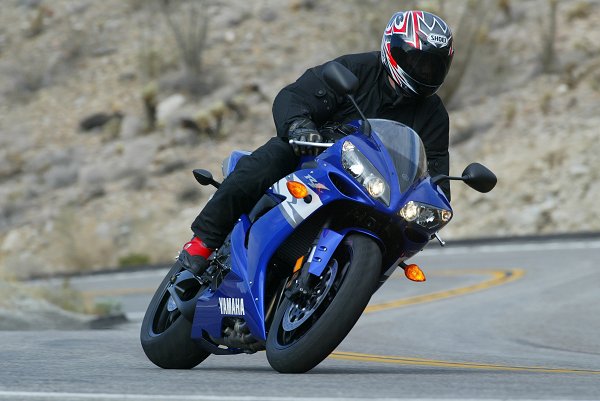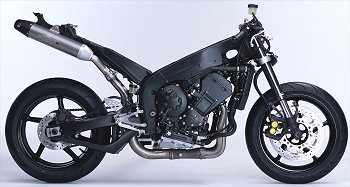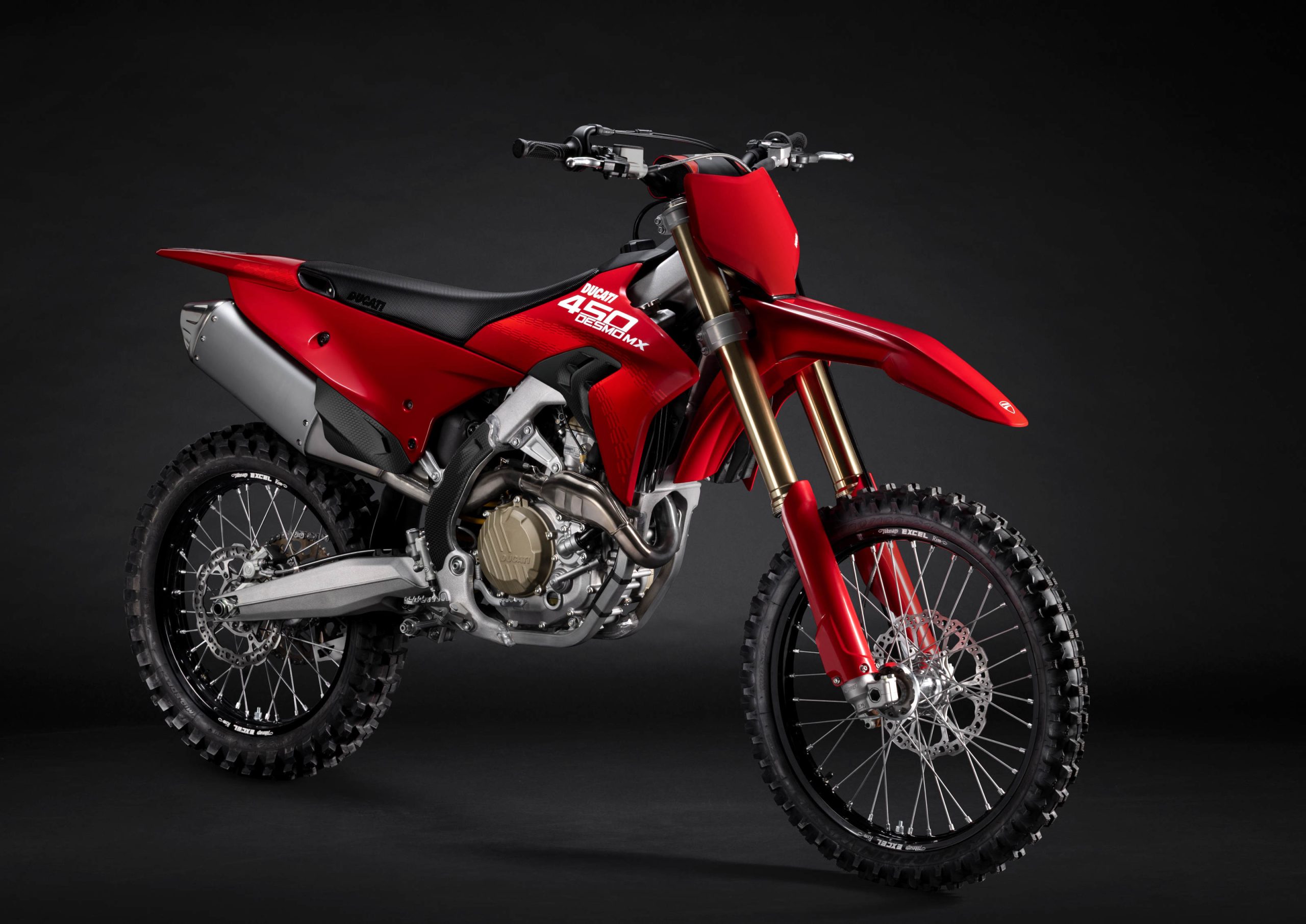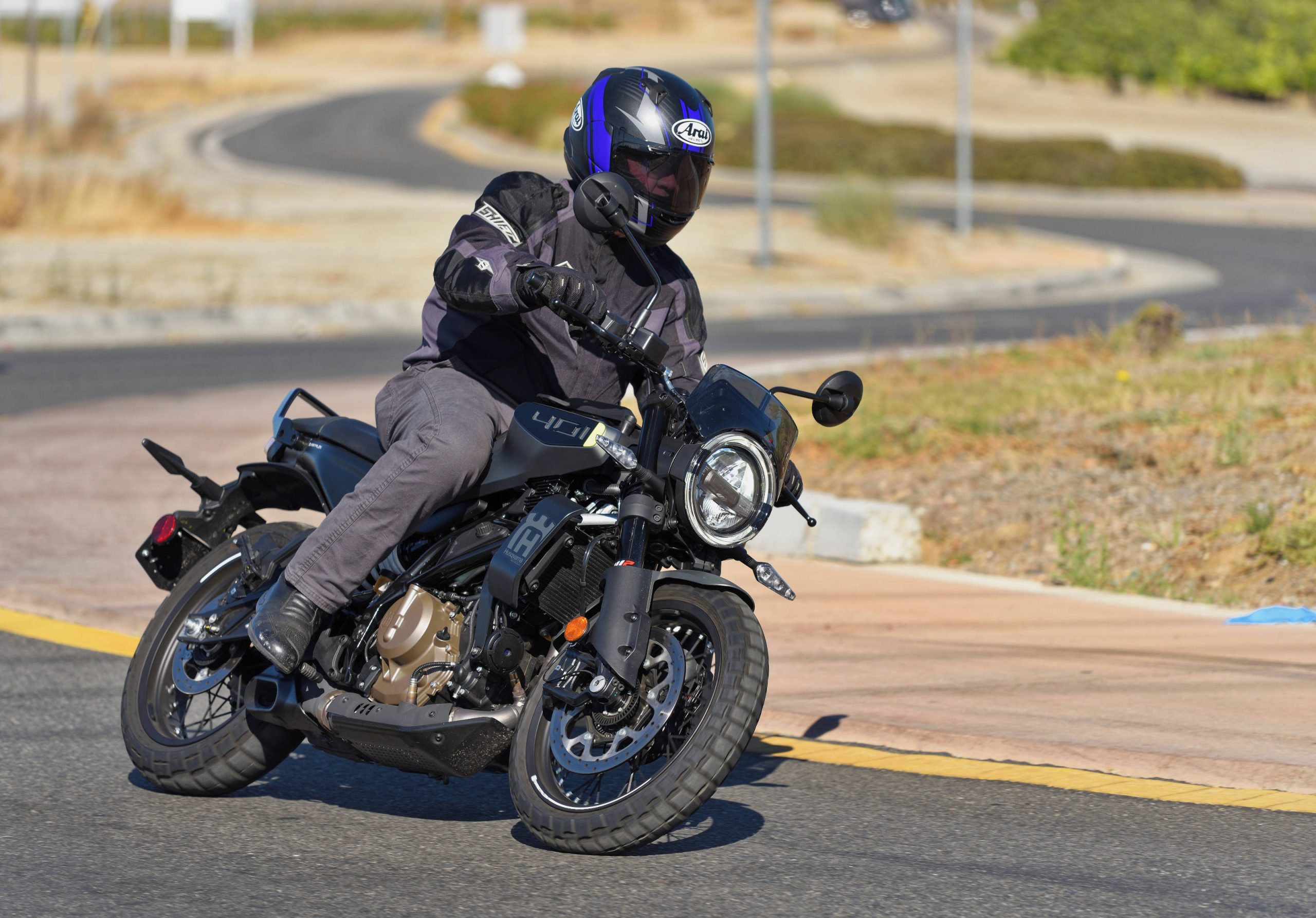
In early December of last year, curious journalists (like myself) and fans of motorcycle roadracing, waited anxiously for news from the Dunlop tire tests at Daytona International Speedway. Why? Simply because it would be the first news regarding the performance of several new production machines, albeit in race trim. These included new open-classers from Honda and Kawasaki, as well as an entirely new Yamaha R1.
At first, it appeared that Honda was making the biggest splash with the speed of its CBR1000RR superbike at the Speedway (particularly, with Ben Bostrom in the saddle). Then, something more stunning appeared in the press releases from Daytona. A superstock-specification (superstock bikes are allowed significantly fewer modifications from stock than a full superbike) 2004 Yamaha R1, with unheralded Jason DiSalvo at the controls, was throwing down some incredible lap times, and proving to have enough top speed to hang with the superbikes around the legendary bankings of Daytona. The sperstock R1 was so quick in its maiden test, you had to wonder whether Yamaha had been tweaking it for quite some time, or whether it was really a “nearly stock” motorcycle as Chuck Graves and crew indicated. In any event, when DiSalvo lapped Daytona quicker than defending Superbike champ Mat Mladin on his highly developed GSX-R1000 superbike, jaws dropped. If DiSalvo’s bike was anywhere near stock, the new Yamaha R1 would have to be an absolute rocket.
Flash forward to Sunday, February 15, 2004, and I’m driving frantically to get to the US press launch of the 2004 R1 in Borrego Springs, California. Already realizing that my gross miscalculation of the necessary travel time means I will miss the entire cocktail hour/reception, I sure don’t want to be late for the technical presentation that starts immediately thereafter. I literally arrive one minute before the technical presentation is scheduled to start, and I am relieved to find the Yamaha representatives still setting up for the show. What follows is, in many ways, the typical technobabble we hear at virtually every press introduction, but mixed in are some very interesting facts that really catch my attention.

First of all, since the introduction of the original R1 in early 1998, the sale of supersport models by Yamaha has skyrocketed, increasing nearly 600% from January 1998 through the end of 2003. Supersport machines are extremely important to Yamaha, and the R1 is not only a sales leader, but an image builder for the company.
The other thing that struck me was the importance of styling to the R1 development team. Every manufacturer is throwing high technology at this class of motorcycle (Yamaha, included), but the styling of the R1 seems to receive extra special attention. For instance, Yamaha seems to love its new casting technology (that allows flowing, curved, smooth structures, with varying wall thicknesses) as much for its ability to inject style into the machine (and, in particular, its chassis) as for the technical advantages it brings to the table. The shape of the new R1’s swingarm is a work of art. Even portions of the frame and subframe received some of this sculpting effect.
Since its introduction in 1998, the R1 has developed a devoted, almost maniacal following. The performance standards set by that bike have only now been challenged by Honda and Kawasaki, although Suzuki took on the R1 with its GSX-R1000, and even surpassed the R1 in terms of outright horsepower and performance a few years ago. While you have already read reviews of the new offerings from Kawasaki and Honda, the R1 represents Yamaha’s attempt to take back the top rung of the ladder in the supersport category from Suzuki, as well.

Yamaha really appears to have pulled out all the stops in designing the R1’s entirely new engine (Suzuki didn’t leave it much choice). To achieve a rather amazing redline of 13,750 rpm (a full 2,000 rpm higher than last year’s motor), Yamaha went with an extremely over-square engine architecture, increasing bore by 3 mm, and decreasing stroke by nearly 4 and 1/2 mm. Claimed peak horsepower is 180 (with ram air effect) and 172 (without ram air).
While retaining the bike’s signature five-valve-per-cylinder head design, Yamaha also dramatically increased engine compression to 12.4:1 (up from 11.8:1 last year). Yamaha has also joined the ram air club; at speed, pressurized air is fed to the airbox through dual intakes below the headlights.
The engine is entirely new, as stated, and its cylinders are also slanted forward an additional 10 degrees (40 degrees from upright, as opposed to 30 degrees last year). The crank spins 20 mm lower in the frame. Moving engine parts are lighter, just about everywhere. The crank is 16% lighter than last year. The clutch is 5% lighter, and even those larger-bore pistons are lighter.

The 2003 R1 probably had the smoothest fuel injection system of any of the sportbikes available last year, but Yamaha took a chance and redesigned their fuel injection system this year (to give them more head room in terms of horsepower and torque). Yamaha’s technical material describes the new fuel injection system as “dual-valve throttle bodies with motor-driven secondary valve”. Throttle bodies are 45 mm this year (40 mm last year).
Aside from the much higher compression ratio, Yamaha employed other traditional hot-rodding techniques, including more radical cams (with increased lift), narrower included valve angles, and larger port sizes (both intake and exhaust ports are 5 mm larger this year).
Even with those significantly larger bores, this year’s engine is only 2.5 mm wider overall, due largely to a new, closed-deck cylinder design that allows spacing between the four cylinder bores to be dramatically reduced. That narrow engine, more steeply angled forward, allows a straight double-beamed frame to pass over the top of the engine, leaving the 2004 R1 substantially narrower than last year’s bike (3 inches narrower, to be exact). That frame is also dramatically stiffer, overall, even though the bike as a whole has lost 4 pounds. An exhaust system made entirely from titanium helps with the diet (the only portion not titanium is the section containing the catalytic converter).

Yamaha claims handling is improved with 6 mm less trail (rake is identical to the 2003 model) in the steering geometry. New 43 mm Kayaba forks have slightly stiffer springs and different valving from last year. The same can be said for the shock absorber. The handling package is topped off with a variable steering damper that activates only during rapid steering movements (such as the beginnings of head-shake).
Yamaha seems to have really gone after class leading braking performance in the design of its front braking system. Incorporating a radial Brembo master-cylinder (nice stuff!), the one-piece calipers are radial mounted (like the competition), but squeeze even larger rotors (320 mm each) than last year. The competition used their radial caliper mounts as a reason to decrease rotor size. Any increase in rotating mass created by the larger rotors is easily offset by new, lighter wheels (10% lighter in front and 7.5% lighter in the rear).
The ergonomics of the 2004 R1 have actually been relaxed, somewhat, with bars placed slightly higher, and foot pegs slightly lower and forward compared with last year’s R1.
Riding the new R1 reveals that Yamaha has done an excellent job with the bike, overall. First impressions include the more comfortable ergonomics and a very tall first gear requiring a fair amount of clutch slippage to get underway. That tall first gear is the price you pay, apparently, for the extremely close ratio transmission (sixth gear is exactly twice as tall as first gear).

Once underway, the R1 feels torquey and smooth. Indeed, vibration levels are pretty low throughout the rev range. The bike also feels stable, and seems to provide pretty good feedback from the front end. The change in trail, as well as a weight shift forward this year (52% over the front wheel, as opposed to 50.5% last year) certainly contribute to this sensation. The suspension feels firm, but balanced and supple at the same time. The chassis just feels right.
Power builds in a linear fashion. Right from a torquey pull at 4,000 rpm to a hellacious rush of acceleration from 8,000 rpm to redline. This bike has a powerband a mile wide.
The narrowness of the new R1, combined with the chassis geometry and weight distribution, allow the rider to change direction very easily. The R1 does not feel like a 600, but it feels very nimble for a 1000. Factoring into the nimbleness are the lighter reciprocating engine parts (including the dramatically lighter crank this year) and wheels.

Despite the suspension firmness, mid-corner bumps do not seem to upset the R1, which tracks on your intended line. Overall, the handling on our 200 mile street ride was difficult to fault.
Aside from the overly tall first gear, the transmission did its job well. Improvements to the R1 transmission have resulted in an easy shifting, positive feel on your boot. I did miss a couple of shifts (finding false neutrals) during the ride, but I would attribute this more to my familiarization process with the bike, than to any fault of the transmission.
Although the ergonomics feel good, wind protection is close to nil. The seat is a bit taller this year, placing an average-sized rider far above any protection offered by the tiny wind screen (without assuming a full tuck). The upside is that any wind blast hits you low enough that no turbulence is felt above the shoulders.

The all-important front brake on the R1 is outstanding. Nearly every bike in this class has plenty of power in the front brake, but the R1 Brembo master-cylinder and radial mounted caliper combination offers awesome power with good control. A bit more lever travel, and a bit less initial bite than some of the competition (bite is more progressive) actually allows the rider to use the front brake more confidently.
I tend to use the rear brake very lightly, and had no complaints with its operation or feel. The lever placement for the rear brake also felt natural, almost immediately.
Styling is always subjective, but the R1 is the only Japanese sport bike that appears Italian in some of its lines and shapes. “Italian” can be a compliment or a put down, depending on your perspective. Personally, I like the design of the R1. I initially thought the tail section looked too heavy, but having seen the bike in person, I have changed my mind. The 2004 R1 continues a tradition of relatively dramatic, but balanced styling.

Continuing the Italian theme, the seat of the R1 transmits heat from the under-seat exhaust system to the rider. As you can probably tell by my clothing in the pictures, we tested the R1 on a mild-to-cool day in the desert, and the warm bum wasn’t too annoying. It was noticeable enough, however, to have me wondering just how annoying it might become on a hot Southern California day. Some additional heat insulation between the pipes and the rider’s seat (we did not test the passengers seat) is in order.
In the end, after a full day riding the R1 on the street, we are very impressed with Yamaha’s new flagship. We also feel that we have solved any mystery connected with Jason DiSalvo’s stunning lap times at Daytona. He was simply aboard a damn good motorcycle.
We do intend to perform a comparison test of the four open-classers, from Honda, Yamaha, Kawasaki and Suzuki. Stay tuned for that showdown.
In the meantime, note that Yamaha’s new R1 is now arriving in dealers carrying a US MSRP of $10,599. Visit Yamaha’s web site for additional details.






